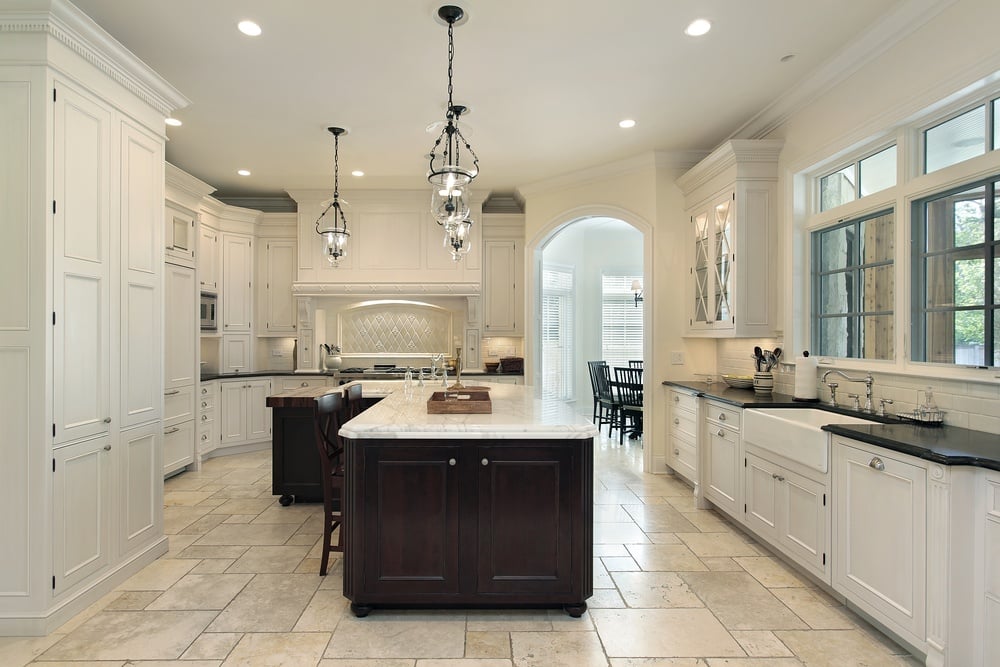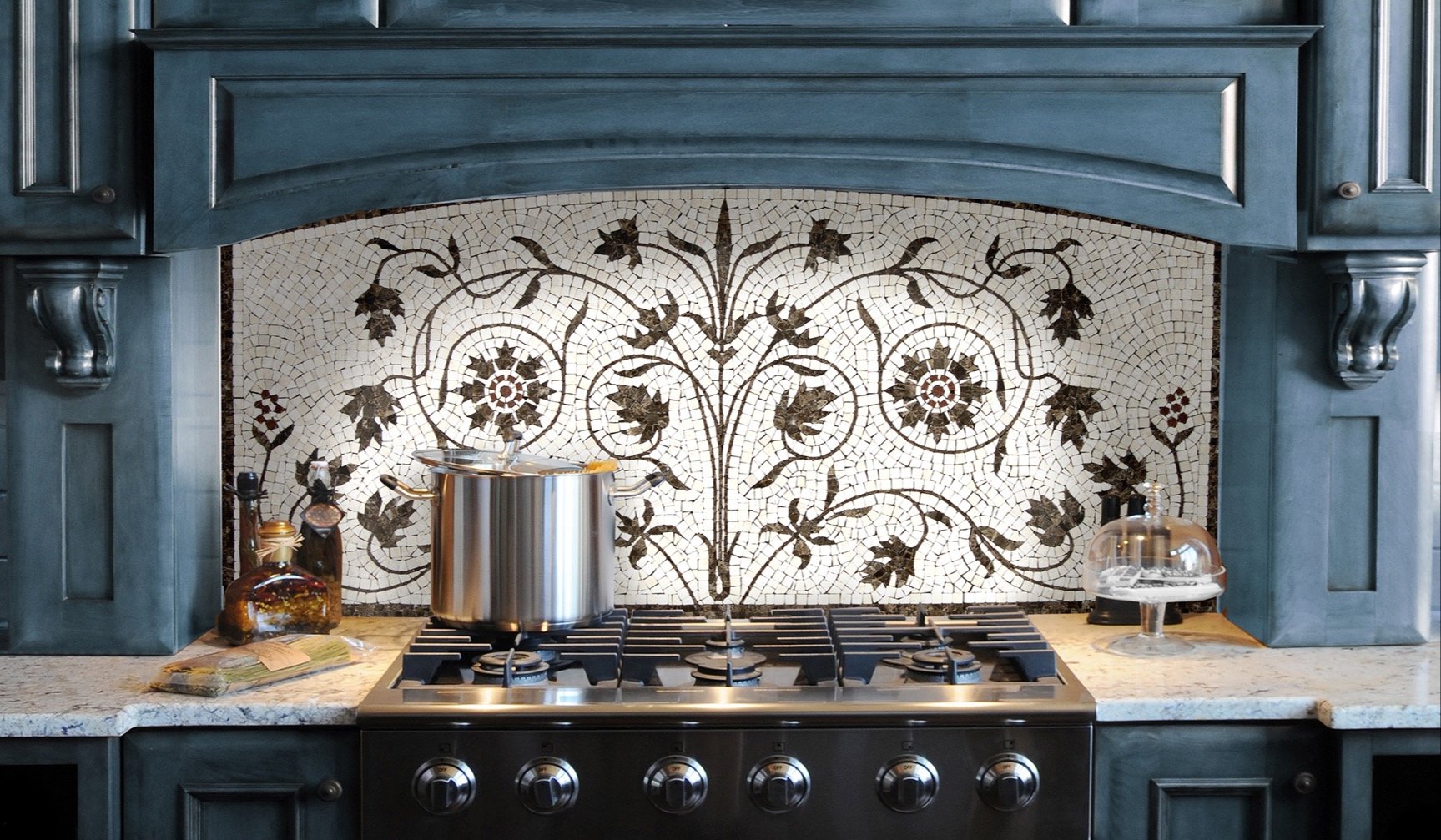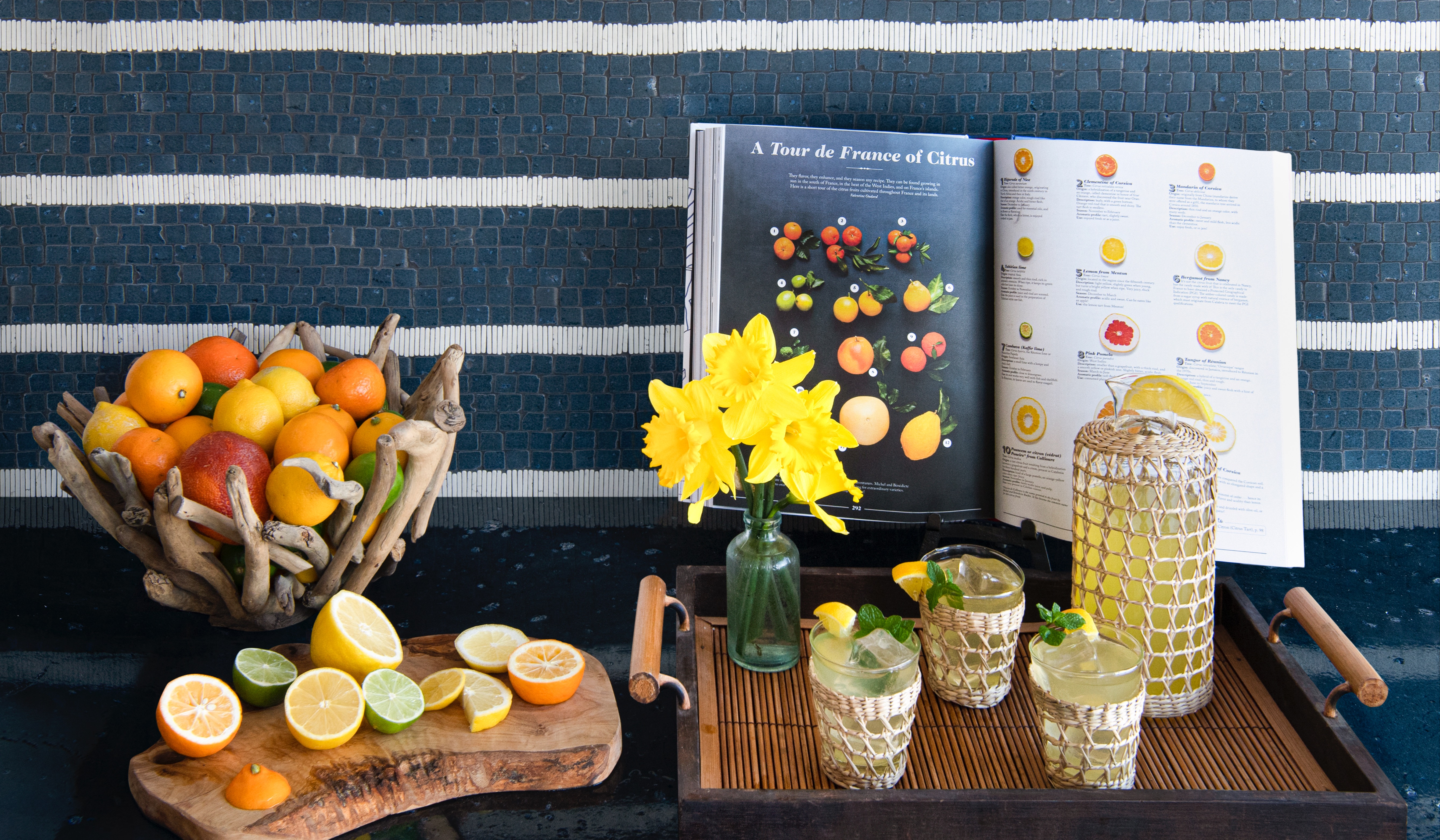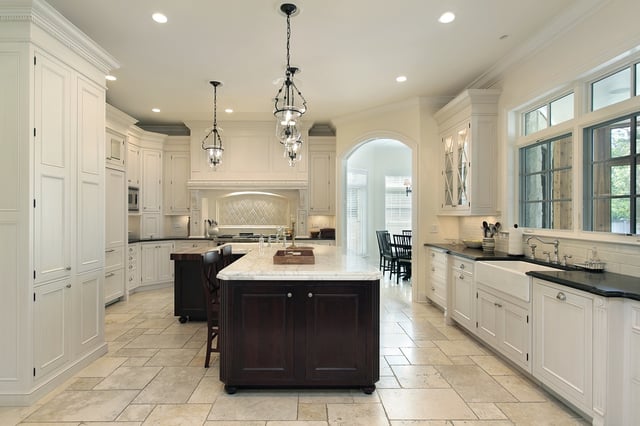
When choosing kitchen floor tile for your project, considerations about usage and appearance should be top of mind. Picking the right tile can ensure you’re able to enjoy a stylish and durable kitchen floor for years, while picking the wrong tile can lead to frustration, cost-overruns and even the need to re-do the tile installation in the worst cases.
Fortunately, picking the best floor tile for kitchens is fairly straightforward, as long as you take these five factors into consideration:
1. The Right Tile Type
Selecting tiles which are well-suited to your project space is a primary consideration. When it comes to kitchens, the best type of tile has a non-slip surface, is durable and chemical resistant, and has a low porosity.
Porosity describes the presence of pores — much like those on your face — which consist of tiny holes or gaps in the material that can absorb liquids and even odors. Tiles with a low porosity are best in a kitchen, as they’re easy to clean and won’t retain odors or stains when you inevitably spill food and liquids in the course of cooking and eating.
Porcelain tiles are a great fit for kitchens, since they’re able to meet all the tile-type criteria you’re looking for. Porcelain can be glazed with a non-slip surface, is one of the most durable types of materials for tiles, and has a very low porosity so it will always be easy to clean.
If you’re interested in a more organic aesthetic, certain types of natural stone tiles may be a better choice. Stone can be a useful option for kitchens as long as you choose a type that’s durable and has a low porosity, so it will be easy to clean and maintain.
Also see: 3 Luxury Tile Purchasing Secrets They Don’t Want You to Know
2. Color Considerations
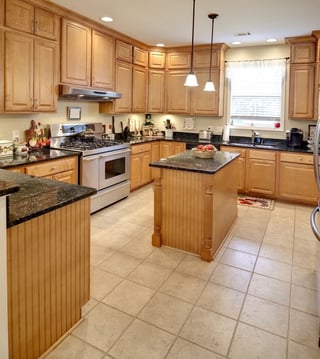
When choosing the best tiles for kitchen design, color is a top factor to keep in mind. The color of your floor can transform the feel of a kitchen in a variety of ways. Warm, earthy colors can make a kitchen feel inviting and comfortable, while cool or white-toned colors can make a kitchen feel clean and spacious.
However, it's important to remember that a kitchen is a working room, not purely decorative. While cool and white-toned colors can make the room feel clean, dark colors actually hide stains and dirt more effectively, and are easier to keep looking clean over time.
3. Choosing the Best Texture
Decorative kitchen floor tiles can have a huge impact on the visual feel of a room, but don’t forget that the texture of your tiles determines its performance in daily life. A high-gloss porcelain floor may look amazing, but it’s likely to get slippery very quickly while cooking.
Having non-slip characteristics is crucial for kitchen tiles, especially if you do a lot of cooking or simply have a kitchen that remains steamy or holds onto moisture throughout the day. For that reason, matte finish or textured tiles are usually preferable.
4. Maintenance of Natural Stone
Natural stone is a popular choice for residential floor tiles. However, keep in mind that it comes with some special maintenance concerns. While you should always choose a natural stone with a low porosity to prevent staining, any type of stone is going to be prone to scratching and clouding caused by dirt and dust. Since dirt is often abrasive, simply walking on a natural stone floor that has dirt on its surface can be enough to cause scratches over time.
For that reason, it’s important to sweep natural stone tiles regularly and take steps to prevent people from tracking dirt into the room to begin with. Installing long “dirt catcher” carpet runners in the hallways leading up to the kitchen is usually a good idea. Additionally, make sure to install floor protectors on the legs of any furniture that might scratch the floor, and always use a floor cleaner with a neutral pH balance to protect the natural stone's surface.
Also explore: Decorative Materials Stone Care Guide
5. Grout Joint Size and Colors
Grout joint size describes how wide the visible joints between the tiles will be. The size of the grout joint has a big impact on the visual appearance of a kitchen, and it can also be colored to achieve your desired aesthetic. However, remember that grout is usually prone to looking dirty over time, so darker grout hides the inevitable stains more effectively than light grout.
Choosing the right floor tiles can transform a kitchen in both appearance and function. Come explore our decorative kitchen tiles for inspiration and contact us with any questions.

